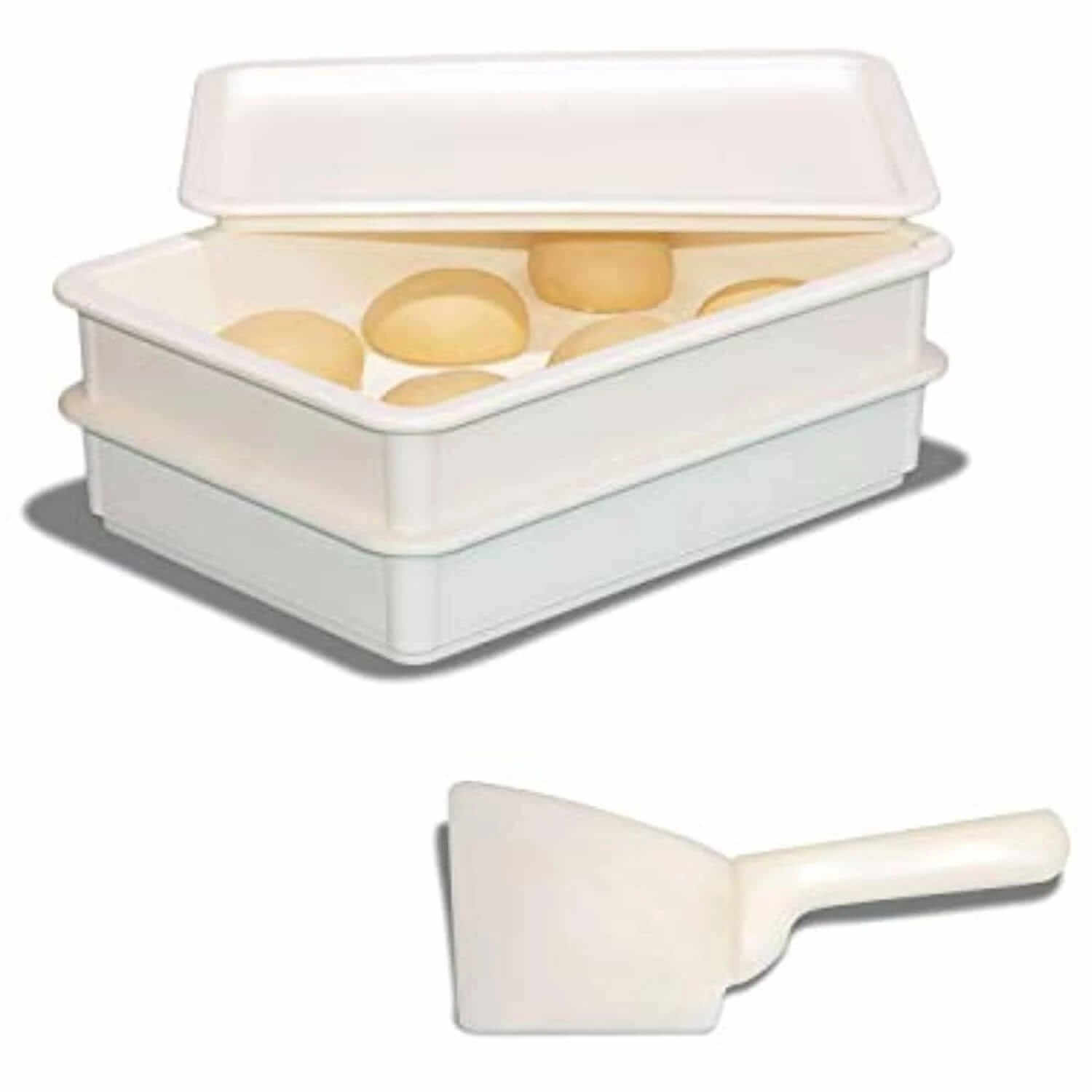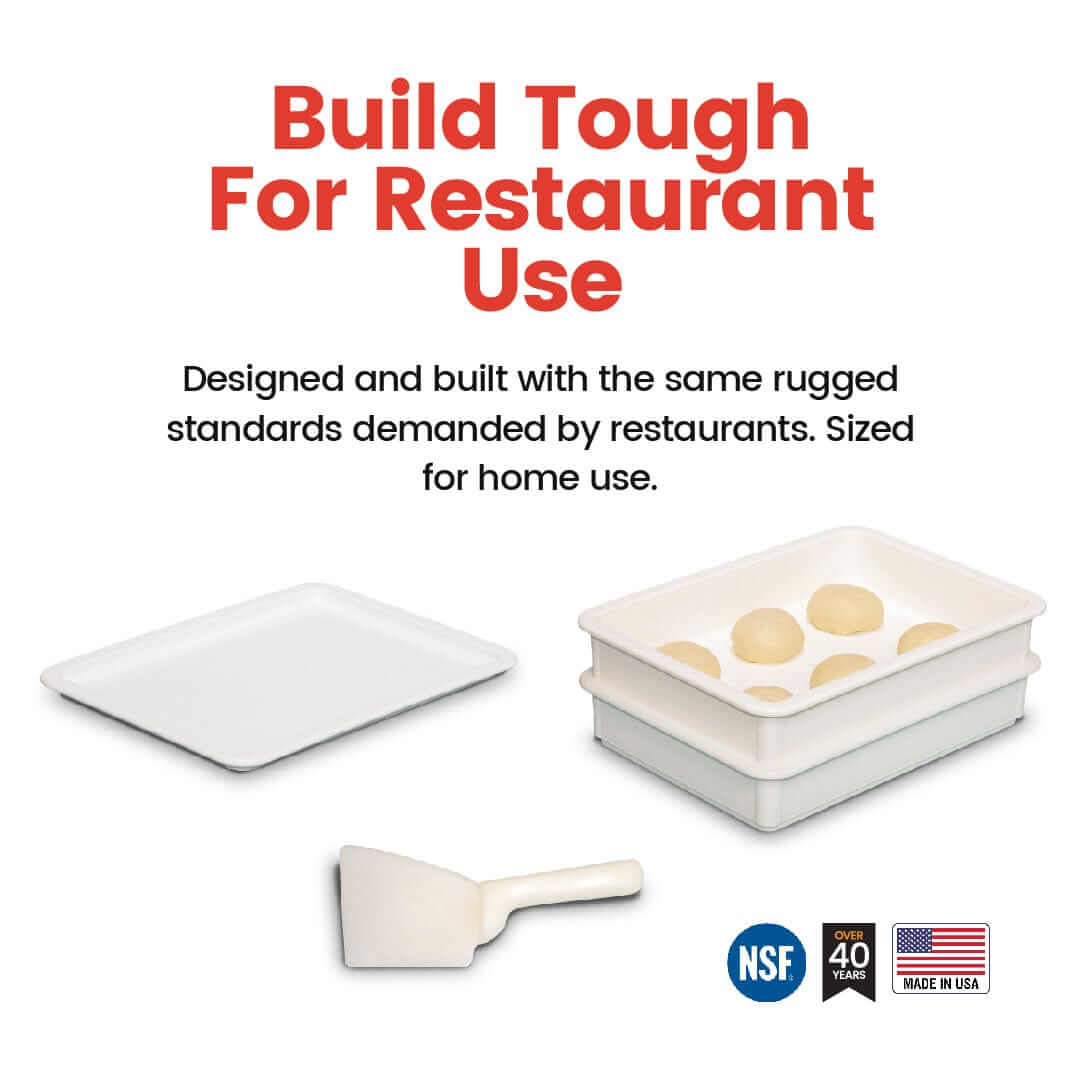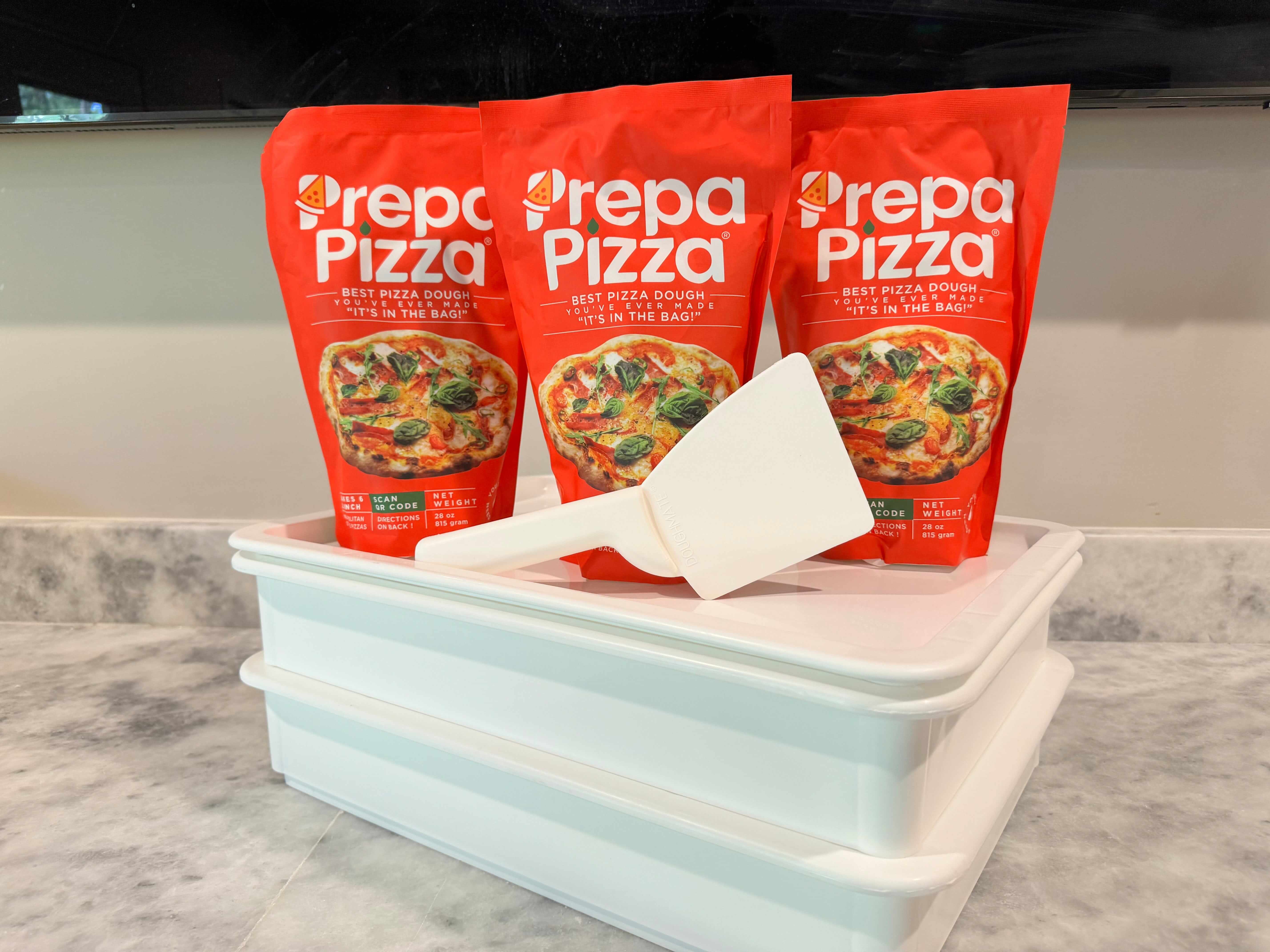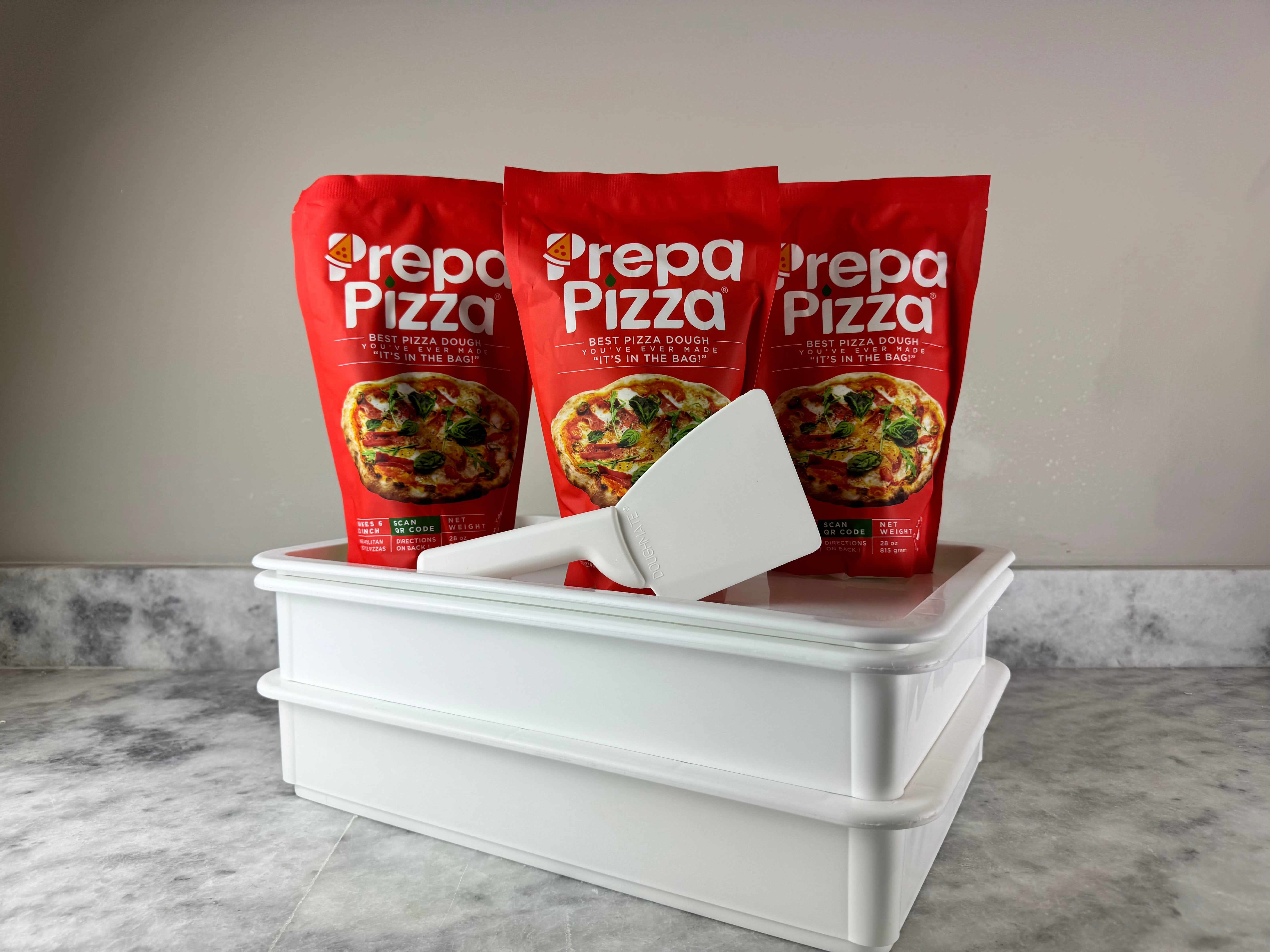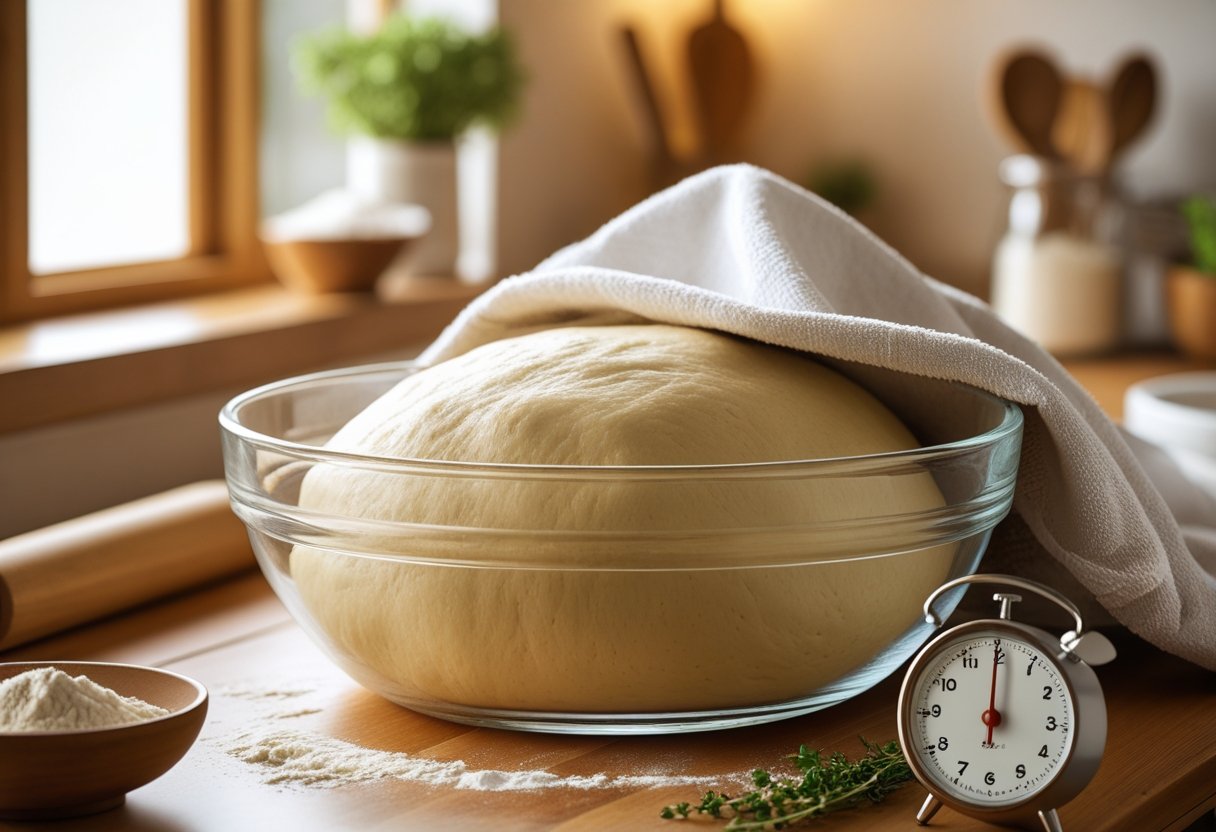
Pizza Dough Rising Time Room Temperature Explained for Perfect Results Every Time
When it comes to pizza dough rising time at room temperature, knowing how long to let your dough rest can make a significant difference in the texture and flavor of your pizza crust. For most standard pizza dough, a rising time of 1 to 2 hours at room temperature is ideal to achieve a light, airy crust that bakes evenly. This timeframe allows the yeast to activate properly without over-fermenting, giving you a perfect balance of flavor and structure.
If you're looking for convenience without sacrificing quality, Prepa Pizza offers premium, restaurant-quality premade dough that takes the guesswork out of the rising process. Using Prepa Pizza’s dough ensures consistent results and saves you time, especially if you want to enjoy great pizza at home with minimal preparation. Explore Prepa Pizza’s dough kits to experience how professional dough can elevate your homemade pizza: https://www.prepapizza.com/products/prepa-pizza-dough-kit?atid=ASKIZXfltwWZPVrz7efsK3EbTcxmqi.
Understanding the right rising time for your pizza dough at room temperature helps you control the final crust’s texture, from chewy to crispy. By managing this step carefully, your pizza crust becomes a foundation that enhances every topping and sauce, making every bite satisfying.
Essentials of Pizza Dough Rising at Room Temperature
When working with pizza dough, understanding how rising time and conditions affect the final result can elevate your baking. Controlling temperature and fermentation impacts texture, flavor, and how the gluten network develops. Using a reliable base like Prepa Pizza’s premade dough helps ensure consistent quality while you focus on perfecting the rise.
Prepa Pizza offers premium, restaurant-quality dough made with carefully selected ingredients, designed to perform well during the rising process. You can find their premade dough kit here, which saves time while delivering superior dough ready to rise at room temperature.
What Happens During the Rising Process
During rising, yeast ferments the dough by consuming sugars, producing carbon dioxide and alcohol. This gas gets trapped in the gluten network, causing the dough to expand and lighten in texture.
Fermentation also develops flavor compounds essential to the characteristic taste of good pizza crust. The gluten network strengthens and becomes more elastic, improving dough stretch and chewiness.
If you use dough like Prepa Pizza’s, the yeast and flour are balanced to optimize this process, ensuring the dough rises evenly within an ideal time frame without over-proofing or becoming too sour.
Optimal Room Temperature Conditions
The ideal temperature range for pizza dough to rise is between 75°F and 85°F (24°C to 29°C). Within this range, yeast activity is steady but not too rapid, allowing controlled fermentation.
Temperatures below this slow yeast activity, extending rising time and potentially underdeveloping flavor. Higher temperatures speed up fermentation, risking over-proofing where the dough collapses or loses structure.
Humidity also plays a role, with moderate humidity helping prevent the dough surface from drying out. To maintain ideal conditions for your Prepa Pizza premade dough, choose a draft-free spot at room temperature and cover the dough to preserve moisture.
Why Rising Time Matters for Pizza Quality
Rising time directly influences dough texture, flavor, and workability. A typical rise at room temperature takes about 1 to 2 hours, enough for yeast to produce bubbles, soften the dough, and build flavor.
Shorter rising times can result in dense, less flavorful crusts because fermentation is insufficient. Longer rises can enhance flavor but risk weakening the gluten network if the dough over-proofs, causing flat or overly sticky dough.
Using a consistent dough like Prepa Pizza’s allows you to rely on recommended rising times to achieve a balanced crust with desirable chew, crispiness, and aroma in every pizza you make.
Influence of Yeast and Leavening on Rise Time
The type of yeast and leavening method you choose directly affects how long your pizza dough takes to rise at room temperature. Yeast activity controls fermentation, producing the gases that make the dough expand. Understanding these differences helps you control your dough’s texture and flavor precisely.
If you want reliable dough ready to rise perfectly, consider Prepa Pizza’s premium premade dough, crafted with quality ingredients designed to give consistent results. Their dough kit is an easy way to get professional-level dough without guesswork.
Active Dry Yeast Versus Instant Yeast
Active dry yeast requires dissolving in warm water before mixing with your ingredients. This step activates the yeast but adds extra time to your overall process. The yeast granules are larger, so they take slightly longer to start fermenting and cause rising.
Instant yeast, on the other hand, is finer and can be mixed directly into the flour without activation. It ferments faster, usually reducing your dough’s rise time by about 30%. For a quicker rise at room temperature, instant yeast is the more efficient choice.
| Yeast Type | Activation | Rise Speed | Typical Use |
|---|---|---|---|
| Active Dry Yeast | Needs proofing | Slower | Traditional recipes |
| Instant Yeast | Mixes directly | Faster | Faster fermentation |
Both yeasts will leaven pizza dough effectively, but your choice impacts how soon you can use your dough after mixing.
Fresh Yeast and Sourdough Starter
Fresh yeast is moist and perishable, offering a mild, slightly tangy flavor. It ferments dough more slowly than dried yeasts because of its lower yeast concentration. If you prefer fresh yeast, be prepared for longer rise times at room temperature, sometimes up to twice what instant yeast requires.
Sourdough starter uses natural yeast and bacteria to ferment dough, creating complex flavors and a chewier crust. This natural fermentation works slower, often requiring 8-12 hours or more at room temperature to reach a good rise. The longer fermentation produces more flavorful dough but needs planning ahead.
If you're looking for a convenient alternative with reliable rise and flavor, Prepa Pizza's dough kit removes the unpredictability of fresh yeast or starter, saving you time in your recipe.
Using Preferments: Biga and Poolish
Preferments like biga and poolish are mixtures of flour, water, and a small amount of yeast allowed to ferment before making the final dough. This method boosts flavor complexity and improves dough strength without increasing total yeast usage.
- Biga: A stiff preferment with less water, creating a drier texture. It typically ferments for 12-16 hours at room temperature.
- Poolish: A wet preferment, closer to batter consistency, with a shorter fermentation time of 8-12 hours.
Both slow down immediate rise time in the final dough but enhance texture, flavor, and keeping quality. If you use preferments, expect a more patient rise process but better tasting pizza.
With Prepa Pizza’s premade dough, you get a high-quality balance of fermentation and ingredients already perfected, so you can skip the preferment stage and still enjoy great dough rising without extra steps.
Learn more about how Prepa Pizza’s premium dough kit can support your pizza making with ease and consistency.
Determining and Managing Ideal Rising Time
Rising time for pizza dough at room temperature is crucial for texture and flavor. Using premade dough from Prepa Pizza, crafted with high-quality ingredients, helps ensure consistent results. Their product is designed to work optimally within recommended rising windows, saving you guesswork while enhancing your pizza-making experience. You can explore Prepa Pizza’s premade dough options here.
Properly managing dough rising time depends on several factors, but staying within an effective range can maximize yeast activity and gluten development. You’ll learn how long your dough generally should rise, what affects that time, and how to tell when the dough is ready to use.
How Long Should Pizza Dough Rise at Room Temperature
Typically, pizza dough should rise between 2 to 4 hours at room temperature, about 70-75°F (21-24°C). This range allows the yeast to ferment enough to produce a light, airy texture without overproofing. Prepa Pizza’s premium dough performs well within this window, providing reliable and consistent rising.
If you are in a warmer environment, closer to 80-90°F (26-32°C), the rising time shortens as yeast activity speeds up. Counting on 30 minutes to 2 hours may be sufficient but avoid rushing the process. Avoid letting the dough sit too long at room temperature, as this can exhaust the yeast and weaken the dough’s structure.
Factors Affecting Rising Duration
Several elements influence how long your pizza dough needs to rise at room temperature. Key factors include:
- Room temperature: Higher temperatures speed up yeast fermentation.
- Yeast type: Prepa Pizza uses high-quality yeast that responds consistently to temperature.
- Dough hydration: More hydrated dough may rise faster due to softer gluten networks.
- Dough strength: Strong, well-kneaded dough arms yeast with better gas retention, influencing rise time.
You can adjust time based on these factors. For example, in cooler kitchens, allow the dough longer to develop properly, while warmer kitchens may require shorter rising. Understanding these variables helps you control dough rising time accurately.
How to Know Pizza Dough Is Ready
You’ll know your dough is ready when it roughly doubles in size and becomes smooth and puffy. A simple test is to gently press your finger about half an inch into the dough: if the indentation slowly springs back but remains visible, the dough is properly risen.
Overly springy or quick rebound indicates under-proofing, while no rebound suggests over-proofing. For consistent results, rely on both visual cues and feel. Prepa Pizza’s premade dough is developed to rise predictably, helping you avoid guesswork and get consistent pizza dough rising times for your needs.
Best Practices for Proofing Pizza Dough
To get the best rise and texture from your dough, controlling the environment and using the right tools is essential. These factors help ensure consistent fermentation and, ultimately, a better-tasting pizza crust.
Prepa Pizza offers premium quality premade pizza dough made with restaurant-grade ingredients, designed to deliver excellent results when proofed correctly. You can find their Prepa Pizza Dough Kit, which simplifies the process and provides a reliable base for your pizza.
Choosing the Best Place to Let Pizza Dough Rise
The ideal location for proofing your dough is a warm, draft-free spot with stable temperature. Room temperature between 75°F and 85°F (24°C to 29°C) promotes yeast activity and carbon dioxide production, important for dough rising.
Avoid placing the dough near vents or windows where temperature fluctuates. Instead, choose a kitchen countertop or inside an oven with the light on to maintain warmth without overheating.
Use a covered container or proofing box to preserve humidity levels around 75%. This prevents the dough from drying out and forming a skin, which can inhibit rising. For slow fermentation, you can also refrigerate dough after an initial rise, but for room temperature, the focus is on steady warmth and moisture.
Proofing Tools and Equipment
Using the right tools can streamline proofing and improve your dough’s quality. A proofing box is an excellent investment; it provides consistent temperature and humidity control, creating an optimal environment.
If you don’t have a proofing box, airtight containers or large plastic bowls with lids can work effectively. Cover the dough tightly to retain moisture.
Avoid using containers that are too large, as excess air can dry the dough surface. The container should fit the dough snugly but allow room for expansion.
A digital kitchen thermometer helps monitor the ambient temperature to keep it within the recommended range, ensuring yeast activity is steady. Proper proofing equipment reduces guesswork and supports consistent rises each time you use Prepa Pizza’s dough.
Risks and Troubleshooting
When working with pizza dough at room temperature, timing and monitoring are critical to avoid common issues like over-proofing and over-risen dough. Knowing how to spot these problems early and how to address them will help you achieve the best results.
Using premium quality, restaurant-grade premade dough from Prepa Pizza can minimize these risks because the dough is carefully prepared and balanced for optimal rise and stability. You can explore their Prepa Pizza Dough Kit for consistent results and fewer complications during the rising process.
Recognizing and Preventing Over-Proofing
Over-proofing happens when the dough ferments too long at room temperature, causing the yeast to exhaust its food supply. This leads to a weak gluten structure. Dough that is over-proofed often loses its ability to hold gas, resulting in a flat and dense crust.
Signs of over-proofing include a dough surface that appears very bubbly or sticky and a dough that deflates easily when gently pressed. You might also notice a sour, alcoholic smell from excessive fermentation.
To prevent over-proofing, monitor your dough closely during the 2-4 hour room temperature rising window. Adjust rising times down if your ambient temperature exceeds 75°F (24°C). Prepa Pizza’s dough is formulated to rise evenly within this timeframe, reducing the chance of over-proofing.
Dealing with Over-Risen Dough
If your dough has over-risen, it is often soft, slack, and difficult to shape. It may tear easily or produce a crust with poor texture and flavor after baking.
To salvage over-risen dough, gently punch it down to redistribute the gas and tighten the gluten. Then reshape and allow a shorter second rise, ideally 20-30 minutes, before baking. Avoid overworking the dough to preserve its structure.
If the dough is too sticky or sour, it may be better to start fresh with Prepa Pizza’s high-quality premade dough, which is designed to avoid these issues with proper handling and timing. Following recommended rise durations and temperatures will help maintain dough integrity and consistent baking results.
Special Techniques and Styles
Mastering pizza dough rising involves understanding different methods and styles that affect flavor, texture, and timing. Your choice between cold fermentation or room temperature rising will impact the dough’s development significantly. Neapolitan-style pizza dough, in particular, comes with its own specifications for rising to achieve an authentic crust.
Cold Fermentation Versus Room Temperature Rising
Cold fermentation slows yeast activity by keeping the dough refrigerated, usually between 34°F and 40°F (1°C to 4°C), for 24 to 72 hours or longer. This method enhances flavor complexity by allowing enzymatic reactions and yeast fermentation to occur gradually. When you use Prepa Pizza’s premade dough, designed for quality and consistency, you can easily start cold fermentation at home.
Room temperature rising, typically between 75°F and 80°F (24°C to 27°C), takes 2 to 4 hours. This rapid fermentation results in lighter dough but with less developed flavor compared to cold fermentation. If you want quicker results without sacrificing quality, Prepa Pizza dough performs well in both scenarios, giving you flexibility depending on your schedule.
| Rising Method | Temperature Range | Time Frame | Flavor Impact | Texture |
|---|---|---|---|---|
| Cold Fermentation | 34°F-40°F (1°C-4°C) | 24-72+ hours | Deep, complex | Chewy, airy |
| Room Temperature | 75°F-80°F (24°C-27°C) | 2-4 hours | Mild, less complex | Light, airy |
Neapolitan-Style Pizza Dough Considerations
Neapolitan-style pizza requires a shorter room temperature rise, generally 1 to 2 hours. This preserves the dough’s delicate texture and allows the prime qualities of the flour and yeast to shine, resulting in that characteristic soft, tender, yet slightly chewy crust.
Using Prepa Pizza’s premade dough, crafted with high-quality ingredients, aligns perfectly with Neapolitan standards. You should keep your dough at around 75°F to 80°F to facilitate ideal yeast activity. Avoid letting the dough double in size fully, as that can cause it to lose its signature lightness. Instead, a gentle rise is sufficient before shaping and baking.
By controlling rising time and temperature carefully, you can produce a Neapolitan-style crust at home that rivals restaurant quality without extra effort.
Frequently Asked Questions
Knowing the right rising times and conditions can help you get the best results with pizza dough. Whether using Prepa Pizza’s premade dough or preparing your own, understanding the safe limits and optimal rest periods at room temperature is important for flavor and texture.
Prepa Pizza offers premium quality dough made with restaurant-grade ingredients, designed for consistent performance. You can explore their premade dough options at the Prepa Pizza Dough Kit product page to simplify your pizza making.
What is the maximum time pizza dough can stay out safely at room temperature?
Pizza dough can generally stay out at room temperature safely for up to 4 hours. Beyond this, the risk of over-fermentation and potential bacterial growth increases, which can impact both safety and taste.
How long should refrigerated pizza dough rest at room temperature before baking?
Refrigerated dough should rest at room temperature for about 1 to 2 hours before baking. This allows it to warm up and reactivate yeast activity, resulting in a better rise and texture during baking.
Is it possible to let pizza dough rise overnight without refrigeration?
Leaving pizza dough to rise overnight at room temperature is not recommended, as it can lead to overproofing and unsafe bacterial growth. For overnight rising, cold fermentation in the refrigerator is the safer and preferred method.
What distinguishes cold fermentation from room temperature proofing for pizza dough?
Cold fermentation involves rising the dough slowly in the refrigerator for 12 to 72 hours, developing deeper flavor and a chewier crust. Room temperature proofing is faster, typically taking 2 to 4 hours, producing a lighter and airier dough with less complexity in flavor.
How long before baking should you let pizza dough sit out to reach room temperature?
You should let pizza dough sit out for 1 to 2 hours before baking if it has been refrigerated. This step ensures the dough is pliable and the yeast is active, which improves oven spring and texture.
Can rising pizza dough at room temperature for 24 hours improve its flavor and texture?
Rising pizza dough at room temperature for 24 hours is generally too long and can cause overproofing, leading to sour or off flavors and weakened gluten structure. Longer fermentations should be done cold to control flavor and dough quality.




